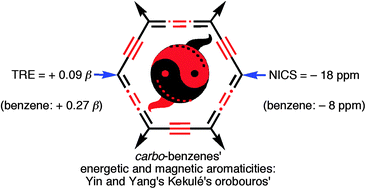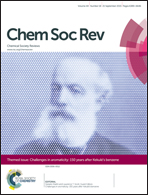“Carbo-aromaticity” and novel carbo-aromatic compounds
Abstract
While the concept of aromaticity is being more and more precisely delineated, the category of “aromatic compounds” is being more and more expanded. This is illustrated by an introductory highlight of the various types of “aromaticity” previously invoked, and by a focus on the recently proposed “aromatic character” of the “two-membered rings” of the acetylene and butatriene molecules. This serves as a general foundation for the definition of “carbo-aromaticity”, the relevance of which is surveyed through recent results in the synthetic, physical, and theoretical chemistry of carbo-mers and in particular macrocyclic–polycyclic representatives constituting a natural family of “novel aromatic compounds”. With respect to their parent molecules, carbo-mers are constitutionally defined as “carbon-enriched”, and can also be functionally regarded as “π-electron-enriched”. This is exemplified by recent experimental and theoretical results on functional, aromatic, rigid, σ,π-macrocyclic carbo-benzene archetypes of various substitution patterns, with emphasis on the quadrupolar pattern. For the purpose of comparison, several types of non-aromatic references of carbo-benzenes are then considered, i.e. freely rotating σ,π-acyclic carbo-n-butadienes and flexible σ-cyclic, π-acyclic carbo-cyclohexadienes, and to “pro-aromatic” congeners, i.e. rigid σ,π-macrocyclic carbo-quinoids. It is shown that functional carbo-mers are entering the field of “molecular materials” for properties such as linear or nonlinear optical properties (e.g. dichromism and two-photon absorption) and single molecule conductivity. Since total or partial carbo-mers of aromatic carbon-allotropes of infinite size such as graphene (graphynes and graphdiynes) and graphite (“graphitynes”) have long been addressed at the theoretical or conceptual level, recent predictive advances on the electrical, optical and mechanical properties of such carbo-materials are surveyed. Very preliminary experimental results on a carbo-benzenoid fragment are finally disclosed.

- This article is part of the themed collection: Challenges in Aromaticity: 150 Years after Kekulé’s Benzene

 Please wait while we load your content...
Please wait while we load your content...